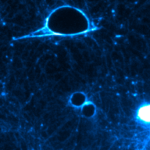Link to Pubmed [PMID] – 30135397
Toxins (Basel) 2018 Aug;10(9)
One of the numerous toxins produced by is enterotoxin (CPE), a polypeptide with a molecular mass of 35.5 kDa exhibiting three different domains. Domain one is responsible for receptor binding, domain two is involved in hexamer formation and domain three has to do with channel formation in membranes. CPE is the major virulence factor of this bacterium and acts on the claudin-receptor containing tight junctions between epithelial cells resulting in various gastrointestinal diseases. The activity of CPE on Vero cells was demonstrated by the entry of propidium iodide (PI) in the cells. The entry of propidium iodide caused by CPE was well correlated with the loss of cell viability monitored by the 3-(4,5-dimethylthiazol-2-yl)-2,5-diphenyltetrazolium bromide (MTT) test. CPE formed ion-permeable channels in artificial lipid bilayer membranes with a single-channel conductance of 620 pS in 1 M KCl. The single-channel conductance was not a linear function of the bulk aqueous salt concentration indicating that point-negative charges at the CPE channel controlled ion transport. This resulted in the high cation selectivity of the CPE channels, which suggested that anions are presumably not permeable through the CPE channels. The possible role of cation transport by CPE channels in disease caused by is discussed.
